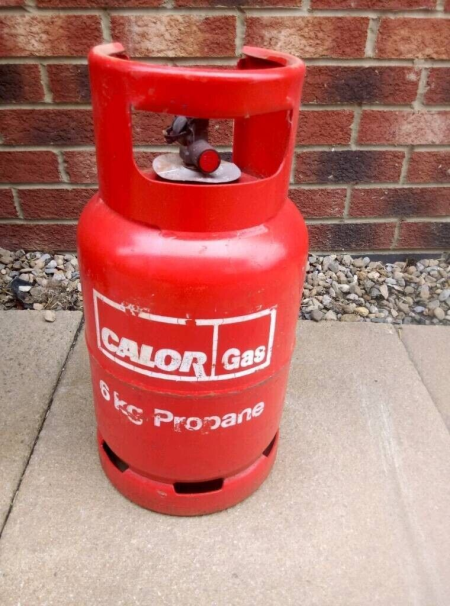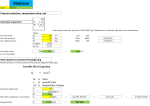Propane & Methane cooling due to pressure reduction

Description
Although the freezing points of Propane (-42C / -44F) and Methane (-182C / -295F), are very low, when there is small amount of water, it may block or damage the reducing pressure regulator. To avoid freezing, the practice is to pre-heat the gas and maintain gas temp after pressure reduction, above water freezing point. The program calculates pure Metahne or Propane temp drop due to pressure reduction and the amount of heat require to maintain high temp.
When propane and methane are subjected to pressure reduction, they undergo a process called the Joule-Thomson effect, which leads to a temperature drop in the gas. This cooling effect can cause condensation and freezing of any water present in the gas or surrounding environment. To avoid freezing water when cooling propane and methane due to pressure reduction, consider the following strategies:
-
Pre-treatment: Remove water vapor from the gas stream before pressure reduction by using dehydration methods such as glycol dehydration, adsorption with desiccants, or membrane separation. Pre-treatment reduces the amount of water that can condense and freeze during the cooling process.
-
Temperature control: Increase the temperature of the gas stream before pressure reduction. This can be done by using heat exchangers, heaters, or insulation around the pressure reduction equipment. Maintaining a higher temperature will help prevent the formation of ice or hydrates as the pressure is reduced.
-
Pressure reduction in stages: Reduce the pressure in multiple stages rather than a single stage. This allows the gas to cool gradually and minimizes the risk of water freezing. Each pressure reduction stage can be followed by a reheating process, which helps maintain the gas temperature above the freezing point.
-
Use of hydrate inhibitors: Add chemicals called hydrate inhibitors to the gas stream, which prevent the formation of hydrates (crystalline structures formed by water and gas molecules). Common hydrate inhibitors include methanol, ethylene glycol, and kinetic hydrate inhibitors. These chemicals lower the temperature at which hydrates form, reducing the risk of freezing during pressure reduction.
-
Insulation and trace heating: Insulate pipes, valves, and other equipment involved in the pressure reduction process to minimize heat loss. In colder environments, consider using trace heating (electric heating cables) to maintain the temperature above the freezing point and prevent the formation of ice or hydrates.
-
Regular maintenance and monitoring: Ensure regular maintenance and monitoring of the pressure reduction system to detect and rectify any issues that may lead to water freezing. This includes checking for leaks, inspecting insulation, verifying that hydrate inhibitors are effective, and monitoring temperature and pressure conditions.
By employing these strategies, you can minimize the risk of water freezing when cooling propane and methane due to pressure reduction, ensuring the safe and efficient operation of your gas processing or transportation system.
Calculation Preview
Full download access to any calculation is available to users with a paid or awarded subscription (XLC Pro).
Subscriptions are free to contributors to the site, alternatively they can be purchased.
Click here for information on subscriptions.





